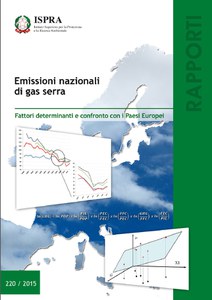National greenhouse gas emissions. Driving factors and comparison with European countries
In the report national trends of some energy and economic indicators have been analyzed in relation to greenhouse gas emissions. National indicators are compared with those of the major European countries. The role of factors that determine greenhouse gas emission trends has been analyzed, such as economic growth, fossil and renewable fuels composition, transformation efficiency, and fossil fuel emission factors. A scenario analysis has been carried out in order to estimate hypothetical emissions without the contraction of gross domestic product due to the economic crisis that has hit the national economy since 2008.
National indicators show higher transformation efficiency and lower intensity compared to major European countries. The European carbon intensity is lower than the national average for the presence of a non-negligible share of nuclear energy in Europe. However, the Italian fossil fuels carbon intensity is lower than most European countries due to lower share of coal and higher share of natural gas compared to that observed for the average of the European countries.
Sharp declining of GDP and increasing of renewable energy consumption share since 2007 resulted in a significant reduction of greenhouse gas emissions. Production activities drop have played key role in reducing emissions after 2007. The scenario analysis shows that without GDP contraction, recorded since 2008, the effect of factors that reduce greenhouse gas emissions would not have been enough to bring emissions below 1990 levels.
Publication available only on-line
Download the publication ( 3,58 mb)

